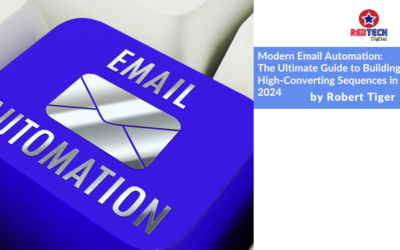In today’s digital landscape, businesses need to focus on critical web analytics metrics that drive real business growth rather than surface-level data points. Moreover, while traditional metrics like pageviews have long been the go-to measurement for website success, research shows that these surface-level metrics rarely correlate with actual business growth. Consequently, modern businesses need a more sophisticated approach to web analytics.
1. User Intent Signals: Beyond Basic Traffic
First and foremost, understanding user intent has become crucial in today’s competitive digital landscape. Subsequently, this metric encompasses several key components:
-
Search terms used on your site
-
Navigation patterns
-
Time spent on specific content types
-
Scroll depth on key pages
Additionally, real-world data supports the importance of this metric. For instance, a company discovered that 60% of their visitors showed ‘confused user behavior,’ characterized by rapid clicking between pages and high exit rates. As a result of reorganizing their navigation based on user intent patterns, they achieved a remarkable 42% increase in conversion rate.
2. Engagement Velocity: Speed Matters
Furthermore, Engagement Velocity measures not just engagement quantity but also its speed and quality. Subsequently, this metric tracks:
-
Time to first meaningful action
-
Interval between engagements
-
Progression through key pages
-
Return visit frequency
In particular, a case study of a SaaS company revealed that users taking specific actions within the first 48 hours were 3.5 times more likely to convert to paid customers. Therefore, this insight led to a complete transformation of their onboarding strategy.
3. Customer Journey Efficiency: Streamlining the Path to Conversion
Meanwhile, Customer Journey Efficiency focuses on measuring how smoothly users move through your funnel. Specifically, it examines:
-
Drop-off points in your conversion path
-
Number of sessions before conversion
-
Impact of different entry points
-
Cross-device journey completion rates
4. Revenue Quality Indicators: Beyond Total Revenue
Subsequently, Revenue Quality Indicators provide a deeper understanding of your revenue streams. Therefore, these indicators include:
-
Customer acquisition cost by channel
-
Lifetime value predictions
-
Revenue per user session
-
Return customer rate
-
Purchase frequency
-
Average order value
-
Product category mix
-
Support ticket history
-
Referral activity
For example, a beauty products client discovered that 70% of their profit came from just 30% of their customers who scored high on this matrix. Consequently, they refocused their marketing efforts, resulting in a 35% decrease in customer acquisition cost and a 48% increase in average customer lifetime value.
5. Content Effectiveness Ratio: Measuring Content ROI
Moreover, the Content Effectiveness Ratio provides a more nuanced view of content performance. Specifically, it considers:
-
Content consumption patterns
-
Topic clustering performance
-
Content journey mapping
-
Conversion attribution by content type
Content Effectiveness = (Engaged Time × Conversion Rate × Share Rate) ÷ Production Cost. Notably, analysis of 200 B2B websites showed that long-form technical content had a 3x higher effectiveness ratio than short-form content.
6. Interaction Quality Score: Quality Over Quantity
Subsequently, the Interaction Quality Score measures the value of user interactions through:
-
Scroll depth variance
-
Click accuracy
-
Form completion rates
-
Return user behavior patterns
-
Time between clicks
-
Mouse movement patterns
-
Form field correction rates
-
Page scroll consistency
As a result of these insights, the client’s form redesign led to a 52% increase in qualified leads.
7. Customer Experience Cohesion: Unifying the Omnichannel Experience
Finally, Customer Experience Cohesion measures cross-channel performance through:
-
Cross-channel engagement rates
-
Device transition patterns
-
Campaign interaction overlap
-
Support ticket correlations
For instance, a retailer implementing this metric discovered that customers using both their mobile app and website had a 2.8x higher lifetime value. Consequently, this led to a complete redesign of their cross-channel experience.
Implementing These Web Analytics Metrics in Your Business
While these metrics might seem overwhelming, it’s best to start with the ‘Critical Few.’ Therefore, businesses should initially focus on:
1. User Intent Signals
2. Revenue Quality Indicators
3. Customer Journey Efficiency
Moreover, most of these web analytics metrics can be tracked using Google Analytics 4 combined with basic spreadsheet analysis. Subsequently, businesses can gradually add other web analytics metrics as their analytics capabilities grow.

Over 75% of Marketers Use Web Analytics

Analytics Boosts ROI by 20%

90% of Businesses See Improved Customer Insights

Web Analytics Increases Conversion Rates by 50%
Practical Implementation Strategies
Furthermore, implementing these web analytics metrics requires a structured approach. Therefore, it’s advisable to follow these implementation steps:
1. Prioritize Metrics Based on Business Goals
Meanwhile, not all metrics will have equal importance for your business. Therefore, Harrison suggests mapping metrics to specific business objectives:
-
Revenue growth: Focus on Revenue Quality Indicators and Customer Journey Efficiency
-
Customer retention: Prioritize Engagement Velocity and Customer Experience Cohesion
-
Content strategy: Emphasize Content Effectiveness Ratio
-
User experience: Concentrate on User Intent Signals and Interaction Quality Score
2. Audit Current Analytics Setup
First and foremost, assess your existing analytics infrastructure. Subsequently, identify gaps between your current tracking capabilities and the metrics you need. Moreover, this audit should include:
-
Review of tracking code implementation
-
Assessment of data quality and accuracy
-
Evaluation of current reporting processes
-
Analysis of team capabilities and training needs
3. Train Your Team
Moreover, successful implementation requires proper team training. Consequently, ensure your team understands:
-
The significance of each metric
-
How to collect and analyze data accurately
-
Ways to interpret results and identify patterns
-
Methods for translating insights into actions
4. Build Your Analytics Framework
Subsequently, develop a comprehensive analytics framework that includes:
-
Data collection methods
-
Processing and analysis procedures
-
Reporting templates and dashboards
-
Action plan templates for different scenarios
Common Implementation Challenges and Solutions
Furthermore, there are several common challenges businesses often face when implementing these metrics:
Data Integration Issues
Initially, many businesses struggle with integrating data from different sources. Therefore, Harrison recommends:
- Starting with a data mapping exercise
- Implementing proper tagging strategies
- Using ETL (Extract, Transform, Load) tools when necessary
- Regular data quality checks
Resource Constraints
Meanwhile, limited resources can hinder implementation. Subsequently, businesses can address this by:
- Prioritizing metrics based on ROI potential
- Utilizing automated reporting tools
- Implementing metrics in phases
- Leveraging existing tools more effectively
Team Adoption
Moreover, getting team buy-in can be challenging.
- Regular training sessions
- Clear documentation of processes
- Celebrating early wins
- Showing direct impact on business outcomes
Future Trends in Web Analytics
Additionally, several emerging trends are expected to shape the future of web analytics:
AI and Machine Learning Integration
Subsequently, AI will play a larger role in:
- Predictive analytics
- Automated insight generation
- Real-time optimization
- Pattern recognition and anomaly detection
Privacy-First Analytics
Furthermore, with increasing privacy regulations, businesses need to focus on:
- First-party data collection
- Anonymous tracking methods
- Consent management
- Privacy-preserving measurement techniques
Cross-Platform Measurement
Moreover, the importance of unified measurement across platforms continues to grow, emphasizing:
- Connected TV and streaming measurement
- Mobile app and web integration
- Online-to-offline attribution
- Cross-device tracking solutions
Conclusion
In conclusion, moving beyond basic pageviews to these sophisticated metrics can dramatically improve business performance. Furthermore, the key lies not in tracking everything but in focusing on metrics that truly matter for your business goals. Therefore, by implementing these seven metrics strategically, businesses can better understand their customers, optimize their operations, and drive sustainable growth.
Remember, metrics are means, not ends. The goal isn’t to improve the metrics themselves but to enhance the business outcomes they represent. Finally, always start with your business questions, then determine which metrics will help you answer them most effectively.
By following these implementation strategies and staying aware of emerging trends, businesses can build a robust analytics framework that drives real growth. Moreover, the future of web analytics promises even more sophisticated measurement capabilities, making it crucial for businesses to establish strong foundations now. Therefore, the time to move beyond basic metrics is now – your business success depends on it.
Key Features of Web Analytics Tools
Essential Analytics Features for Marketers
Real-Time Data Tracking
Customizable Dashboards
Advanced Segmentation
Comprehensive Reporting
Understanding Web Analytics
The Role of Web Analytics in Digital Marketing
Explore Our Latest Insights on Digital Marketing
The Evolution of B2B Lead Generation: Why Traditional Methods Are Failing in 2024
Modern B2B lead generation is undergoing a dramatic transformation in 2024, forcing companies to rethink their entire approach to generating and qualifying leads. In today's rapidly evolving B2B landscape, traditional lead generation strategies are becoming...
Modern Lead Qualification: Beyond MQL and SQL in 2024
Lead qualification in B2B marketing has reached a critical turning point. Traditional lead qualification processes and frameworks are becoming increasingly obsolete in today's digital landscape. As business-to-business lead qualification evolves, organizations must...
Modern Email Automation: The Ultimate Guide to Building High-Converting Sequences in 2024
Modern email automation strategies 2024 are revolutionizing the way businesses connect with their customers. Email automation remains a cornerstone of digital marketing, yet surprisingly, most businesses are stuck in outdated practices. In fact, recent data reveals...
Marketing Automation in 2024: Debunking Myths and Revealing What Actually Works
Marketing automation has undeniably transformed the digital landscape. However, many businesses still struggle to separate fact from fiction when it comes to implementing these powerful tools. Let’s explore the reality behind common marketing automation myths and...
Performance Max vs. Traditional Google Ads: The Ultimate Guide for 2024
In the ever-evolving landscape of digital advertising, marketers are increasingly faced with a crucial decision: should they stick with traditional Google Ads campaigns or embrace the AI-driven Performance Max? Furthermore, this choice has become even more pressing as...
Website Speed and SEO: The Truth Behind the Hype – What Really Matters in 2024
In the ever-evolving world of SEO, website speed has become something of a hot topic. However, many businesses are left wondering whether the substantial investments in speed optimization are truly worth it. Based on recent insights from Apex Digital's Technical SEO...








